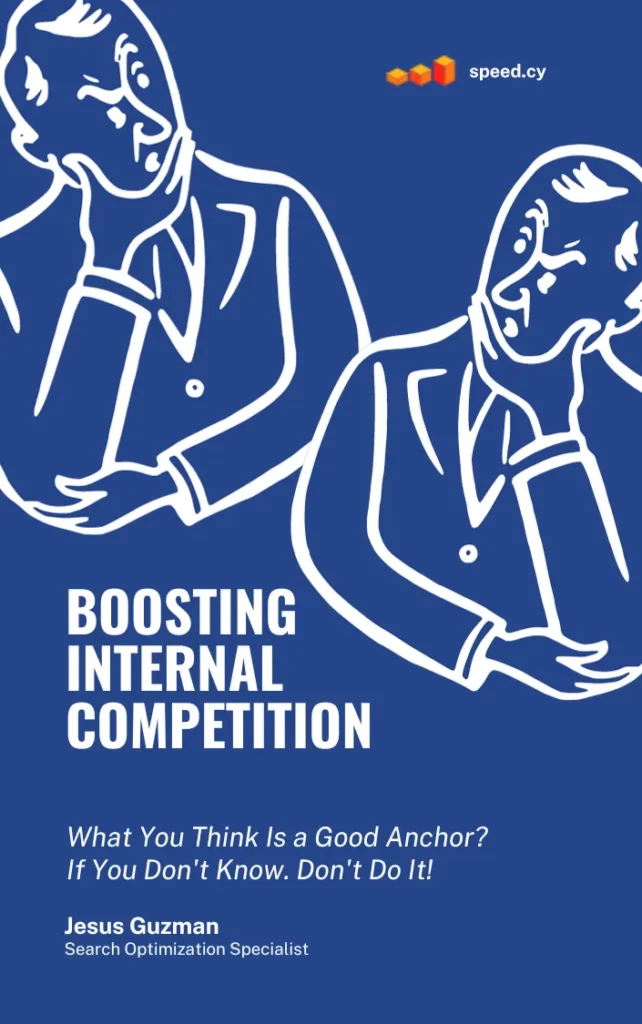Anchor text optimisation is one of those double-edged swords in SEO. We all know the immense power of keywords in links for boosting rankings. But what may be less obvious are the potential downsides – like inadvertently fueling competitor pages or creating internal cannibalization.
In this post, we’ll explore the art of balancing anchor text SEO opportunities with smart risk management. You’ll learn tips to distribute authority without dilution, reduce indirect endorsements, and avoid linking pitfalls that can come back to bite you.
Whether you’re looking to sculpt PageRank flow, manage equity distribution, or simply gain more visibility without sabotaging your own efforts, this guide will uncover the hidden dangers of anchor text SEO and how to use it effectively. Arm yourself with knowledge before forging ahead with your anchoring strategy!
By the end, you’ll have actionable advice on driving traffic while keeping your pages protected against both internal and external threats. Because the last thing you want is a hastily optimised link actually boosting a rival page instead! So let’s dive in and master the balancing act of managing anchor words for smart SEO gains.

The Risks of Overusing Your Keyword as Anchor Text
Here are a few known reasons:
- Over-optimization: Using your target keyword as the link text too often can look spammy to search engines. It comes across as overly aggressive optimisation rather than natural linking.
- Reduced click-through – Anchor text that exactly matches the keyword has lower click-through rates compared to more natural phrasing. Readers often skim over obvious keyword links.
- Limits creativity – Relying solely on the keyword for anchors restricts the ability to write natural link phrases that fit into the content. Varying the anchor text makes the links seem more organic.
- Duplicate content risk – Using duplicate anchor text on multiple pages can trigger duplicate content penalties. Search engines want unique, value-adding anchor text.
- Lower relevance – Anchor text is a relevancy signal to search engines. Defaulting to the keyword may link to less relevant pages compared to descriptive text about the page.
- Link equity flow – Links pass equity and authority to connected pages. So linking to other pages passes value that could make those pages stronger competitors.
- Diluted rankings – Linking internal pages on the same keyword can dilute which page ranks highest for that term if the equity is divided.
- External redirection – External sites can gain a boost from your keyword anchored links if they already rank for that term or can build up equity.
- Indirect endorsements – Linking to other authoritative sites, even for diverse anchor text, can be seen as an endorsement which search engines factor in.
- PageRank sculpting – Intentionally controlling links to shape PageRank/equity flow can have unintended ranking impacts on other pages.
Pro tip 💡
The best practise is to use your keyword in some anchors where relevant, but vary the wording to include related phrases, compelling messaging, page titles, and descriptive text. This makes the links useful for readers while still targeting the keyword. Moderation and creativity are key!
So it’s ideal to be intentional about which pages you link to, using the minimum links needed. Use nofollow on less trusted external sites. And focus internal links on pages covering highly related topics but different keywords to avoid cannibalization.
Proper linking strategy promotes the right pages and prevents indirectly fueling competitors.
Now lets see the topic in more details
Why Your Main Keyword Should Never Be Default Anchor Text

Anchor text optimisation is one of those double-edged swords in SEO. Used strategically, keyword-optimized anchors can significantly boost a page’s visibility and ranking. But overdoing it can undermine your efforts and even indirectly promote competitors. In this article, we’ll explore best practises for maximising anchored words for SEO while avoiding common pitfalls.
Over-optimization Harms Visibility
Using your target keyword excessively as anchor text comes across as spammy to search engines. While some exact match anchors are fine, making them the default can result in a penalty or poor click-through from lack of anchored text variety.
Check what SEMrush says about SEO over-optimization
Competition & Cannibalization
Excess internal linking on the same keyword can dilute which of your pages ranks best and pass equity to indirectly promote rivals. You can inadvertently fuel competitors this way.
SiteGuru explains this topic in depth: Keyword cannibalization and internal competition
Limits Creativity & Relevance
Relying solely on keyword anchor text restricts your ability to link pages naturally and relevantly. Aim to balance optimisation with strong contextual links.
Best Practises for Anchor Text Optimisation
Use Partial Keyword Phrases
Linking with only a portion of your target keyword comes across as more natural in context. For example, “content marketing guide” instead of “guide to content marketing.”
Vary the Anchor Text Wordings
Avoid repeating the same keyword-rich anchor text throughout your site. Mix it up with related phrases, synonyms, page names, compelling messaging, and descriptive text.
Embed Keywords Naturally
Work keyword phrases smoothly into anchor text through proper context. Don’t force it just for optimisation. Make sure it flows well.
Optimise Relevancy Over Keywords
Ensure your anchor text relates strongly to the page you’re linking to, over trying to match a keyword. Relevance matters most for UX and SEO.
Supporting information: Search Engine Land
Internal vs. External Link Anchor Text

Customise for the Situation
For internal links, emphasise descriptive, branded text. For external sites, sprinkling partial keyword matches is fine. But too much looks manipulative.
Control Equity Distribution
Funnel link equity to your most important pages using strong keyword anchors. Use simple descriptive text for less important pages to limit equity flow.
Ideal Anchor Text Keyword Ratios
10-20% Keyword Anchors
As a general best practise, 10–20% of your anchor text containing target keywords is sufficient. The rest should use creative, non-keyword text.
Did you know about the 80/20 amchor text ration rule?
A good rule of thumb is the 80/20 anchor text ratio for optimisation vs. variation. 80% varied text, 20% keyword-optimized.
Referencial information: Diggity Marketing — Anchor Text Optimization – The Ultimate SEO Guide
Managing Equity Flow with Anchor Text
Segment Equity by Relevance
To avoid dilution, use precise keyword anchor text sparingly to direct equity only to closely relevant connected pages. Avoid generalised keyword links.
Avoid Indirect Endorsements
Be selective about external sites linked with valuable keyword anchors. They may indirectly benefit if they already optimise for that term.
Conclusion
Optimising anchor text is invaluable for SEO, but it also carries risks like self-competition and boosting rivals. Using a balanced, controlled approach focused on relevance delivers the benefits while minimising potential downsides.
Keep anchors creative but keyword-conscious, and you’ll see the rankings boost without sabotage!





